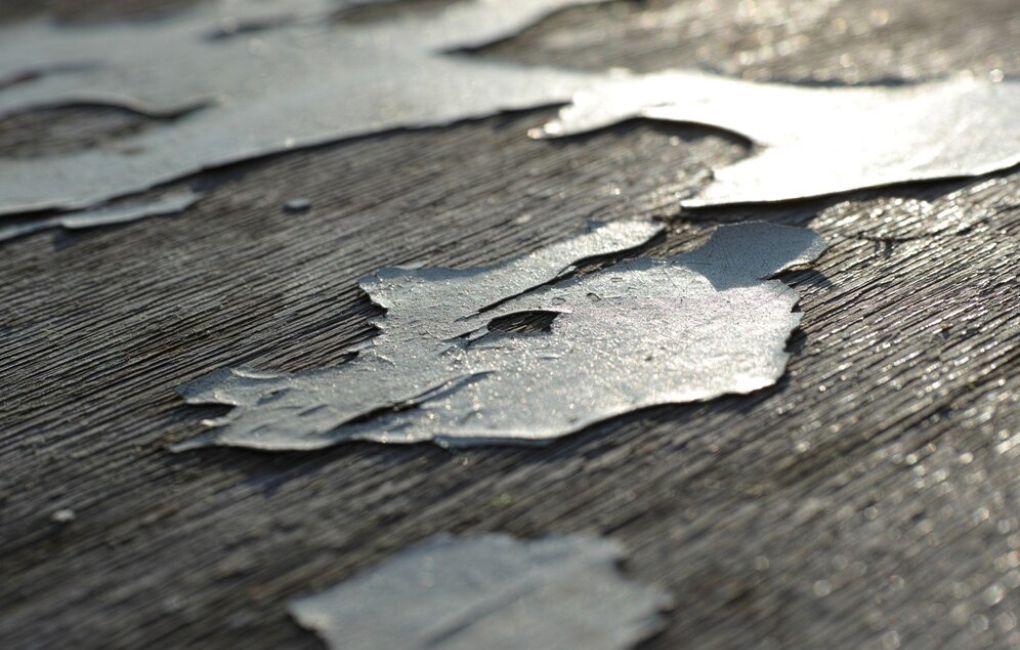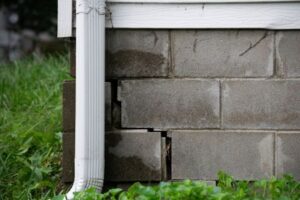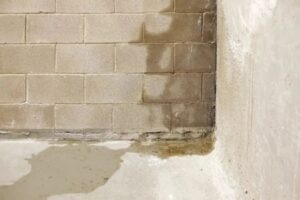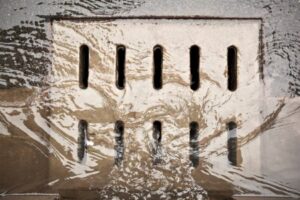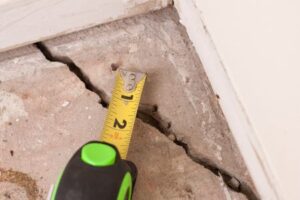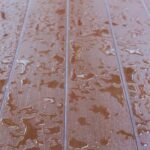Foundation water damage can lead to severe structural problems if not treated early. Cracks in the foundation wall are often the first visible signs, signaling potential water seepage in the foundation. Over time, this moisture can result in a water damaged foundation, weakening the home’s overall stability. Foundation leak detection is essential to identify hidden problems before they escalate.
If left unchecked, water damage to foundations can lead to expensive repairs and safety risks. Regular inspections and proper drainage systems can help prevent these issues. Addressing foundation water damage quickly is critical to maintaining your home’s strength and value.
Watch for cracks in walls or floors, musty odors, uneven floors, and shifting walls. These signs may indicate trapped moisture and potential structural damage. Recognizing these early warnings is key to dealing with foundation damage from water.
Let’s take a closer look at what you should know about this water damage risk!
Why Foundation Water Damage is Bad
Understanding moisture issues around your foundation is essential because they can lead to severe structural problems over time. Addressing these problems early can save you from extensive damage and costly repairs.
Long-term risks of structural deterioration
Experiencing foundation water damage can lead to serious long-term risks that weaken your home’s structural integrity. Moisture that seeps into your foundation creates an ideal environment for mold and mildew, affecting both air quality and the supporting structure. Over time, this persistent moisture can cause cracks, shifting foundations, and misaligned doors and windows.
These issues are not just cosmetic but point to deeper structural concerns. Left unaddressed, they can escalate, leading to more expensive repairs. An unstable foundation can also lower your home’s resale value and complicate insurance coverage. Don’t wait for problems to grow—take action to protect your investment and home’s safety.
How moisture weakens your home’s foundation
Moisture infiltrating your foundation can gradually weaken it, causing significant issues. When water seeps into the surrounding soil, it creates pressure against foundation walls, leading to cracks. As water accumulates, it erodes the soil beneath your foundation, causing shifting or settling.
The materials in your foundation, such as concrete or masonry, can weaken from this moisture exposure, making your home more vulnerable to structural problems. You may notice uneven floors, sticking doors, or cracks in foundation walls and ceilings. Additionally, moisture invites mold and mildew, creating health risks. Address water issues promptly to prevent costly repairs and maintain your home’s integrity.
Early Warning Signs of Foundation Water Damage
Identifying early warning signs of foundation moisture issues is crucial for preventing major problems. Regular foundation leak detection can help spot concerns early, ensuring your home remains safe and structurally sound.
Cracks in walls, floors, or foundation
Cracks in walls, floors, or foundations can indicate underlying moisture problems. Hairline cracks may seem minor, but those wider than a quarter-inch could signal shifting or settling. Pay attention to cracks around windows and doors, especially diagonal ones, as these may suggest uneven settling. Horizontal cracks in the foundation may indicate hydrostatic pressure. Addressing cracks early can prevent costly repairs.
Musty odors or visible mold
Musty odors or visible mold are common signs of excess moisture. A persistent damp smell often indicates trapped humidity, which fosters mold growth. Look for mold in basements, crawl spaces, and corners. Even without visible mold, the odor alone suggests water infiltration. Don’t ignore these signs—quick action can save you from more significant structural and health issues.
Standing water around the perimeter
Standing water near your home’s perimeter can lead to serious problems if left unaddressed. If puddles linger after rain, this suggests poor drainage and potential issues with your foundation. Water can seep into cracks, worsening structural integrity. Ensure your yard slopes away from your home, gutters are clear, and standing water is managed quickly to prevent long-term damage.
Uneven floors or shifting walls
Uneven floors or shifting walls often point to foundation issues, which may be worsened by water damage. Shifting can cause doors or windows to stick and create gaps between walls and ceilings. These symptoms suggest uneven settling caused by moisture. Investigate your foundation, check for water intrusion, and consult a professional to prevent further damage and costly repairs.
What Causes Water Damage in Foundations?
Understanding what causes water damage in your foundation is essential for prevention. Poor drainage or grading, plumbing leaks, and seasonal flooding can all lead to serious issues. By recognizing these factors, you can take steps to protect your home.
- Poor Drainage or Grading: Improper grading or poor drainage can lead to water pooling around your foundation, causing structural damage. To prevent damage, ensure water flows away from your home by regularly assessing grading and installing gutters.
- Plumbing Leaks Below Ground: Underground plumbing leaks can go unnoticed and damage your foundation over time. Look for wet spots or mold, and monitor your water bill. Regular inspections can catch hidden leaks before costly repairs are needed.
- Seasonal Flooding and Heavy Rainfall: Heavy rainfall and flooding can cause hydrostatic pressure, leading to cracks and water seepage in the foundation. Monitor standing water and improve drainage to prevent future damage. Stay proactive to protect your home.
When to Call a Water Damage Specialist
Acting quickly is essential if you notice signs of water damage in your foundation. Ignoring red flags can lead to more extensive damage and costly repairs down the line. Calling a water damage specialist early can help you tackle the problem before it escalates.
Red Flags that Require Immediate Attention
Water damage can develop quickly, turning a small issue into a major problem if not addressed promptly. Key red flags to watch for include:
- Water stains on walls or ceilings, signaling possible hidden leaks.
- A musty odor often indicates mold growth that can damage your structure and health.
- Cracks in walls, floors, or the foundation, which can worsen if not handled immediately.
- Uneven or sagging floors, suggesting damage to the foundation from water infiltration.
- Pooling water around your foundation after heavy rain can increase pressure and cause more damage.
If any of these signs appear, it’s crucial to call a water damage expert immediately to prevent further complications.
The Benefits of Early Professional Intervention
Addressing water damage early can significantly reduce repair costs and safeguard your home. When you spot signs such as damp spots or a musty smell, a water damage specialist can:
- Identify the source of the problem, whether it’s leaks, broken pipes, or poor drainage.
- Prevent further damage by addressing the issue early before it spreads.
- Provide effective solutions that not only fix visible damage but address underlying causes.
- Offer guidance on prevention to avoid future water damage.
By hiring professionals early, you will not only save money but also preserve your home’s foundation and value. Don’t wait for a small problem to turn into a large one—act quickly!
How to Prevent Future Foundation Water Damage
Protecting your home from water-related foundation issues starts with consistent, preventative maintenance. By addressing moisture risks early, you can prevent costly repairs and maintain your home’s structural integrity. Here are essential steps to help reduce water seepage in foundation areas and keep your foundation dry:
- Maintain Proper Drainage: Keep gutters and downspouts clear and ensure they direct water at least six feet away from your foundation.
- Install Drainage Systems: Use solutions like French drains or sump pumps to manage standing water near your home.
- Watch Your Landscaping: Avoid planting trees or shrubs too close to your home. Grade soil away from your foundation to prevent water accumulation.
- Inspect and Seal Cracks: Seal small foundation cracks promptly with waterproof sealant. Call a professional for larger structural concerns.
- Control Indoor Moisture: Use dehumidifiers in damp spaces like basements or laundry rooms to reduce overall moisture.
- Schedule Regular Inspections: Have a professional inspect your foundation every few years to catch early signs of foundation water damage.
Final Thoughts
Staying vigilant about moisture-related foundation issues is essential for protecting your home. By recognizing the early warning signs and understanding what causes this damage, you can take proactive steps to prevent costly repairs.
Don’t hesitate to call a specialist if you notice any concerning indicators. Remember, addressing issues early safeguards your property and guarantees your peace of mind. Notice signs of foundation trouble? Don’t wait—call our experts today!
Frequently Asked Questions
1. How Can I Test for Moisture in My Foundation?
2. What Types of Foundations Are Most Vulnerable to Water Damage?
3. Are There Specific Weather Conditions That Increase the Risk of Water Damage?
4. Can Landscaping Affect My Foundation's Water Drainage?
5. What Are the Long-Term Effects of Untreated Foundation Water Damage?

